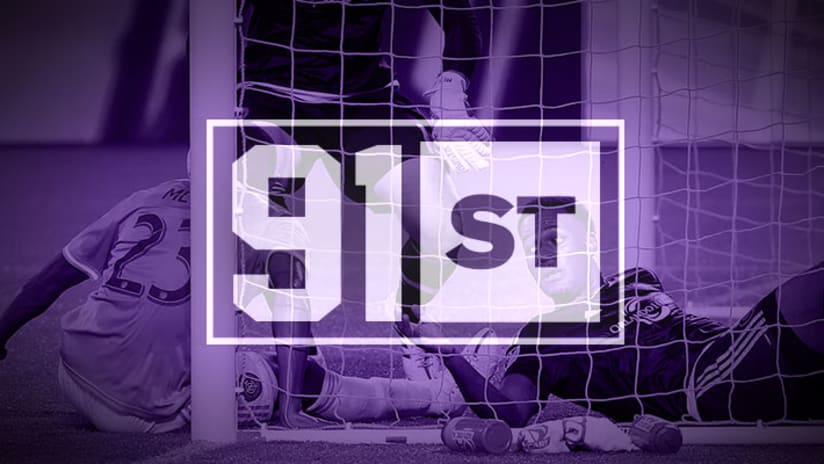The 91st is an OrlandoCitySC.com blog that aims to approach the worlds game with a laid-back and relaxed approach. We’ll cover a range of topics, including today's look at goalline technology by Jordan Bishop. Would you like to submit a post idea or contribute yourself? Email us here.
Looking at all the arguments for and against goal-line technology, where does the MLS stand on the implementation of the revolutionary yet controversial system?
What Is Goal-Line Technology?
Goal-line technology is a system that was implemented at the 2014 FIFA World Cup in Brazil in order to assist the referee with crucial goal-line decisions. Stadiums that are equipped with goal-line technology feature sensors in both goal-posts and the crossbar that picks up a featherweight chip inside the ball. If the ball completely crosses the line a signal is transmitted to a watch worn by the referee which notifies the official within one second with a color-coded symbol. The rules for association football/soccer state that a goal is scored when the whole of the ball crosses the line.
Which Leagues Use It?
The most prominent league that participated in the goal-line technology program is the English Premier League. Along with its regularity in the Premier League and its use in the 2014 FIFA World Cup, UEFA President Michel Platini plans on using it for the 2016 UEFA European Championships. The UEFA Champions’ League currently places a fifth official at each of the goal-lines just in line with the six-yard box.
Pros
In the ways that technology is advancing, the future seems to be filled with the ease of robotic assistance. The implementation of goal-line technology enforces complete accuracy when determining whether a soccer ball has crossed the line completely or not. This proves to be more accurate than the dependence of the human eye and more efficient than video replay.
Cons
While the goal-line technology may be an instant indication of a goal, it doesn’t seem to be a global hit just yet. The biggest criticism of the system is that it takes away the human element in a goal decision and takes away an important responsibility of a referee. While a referee, with the help of his linesmen, is expected to cover all 100+ yards of grass and get every possible decision correct, the element of human decision is a crucial part of the game.
To radicalize the idea of how important the referee’s decision is, imagine if a technological system was implemented in order to determine fouls and their reprimands. The next step after that may be to apply robotic referees and the inhuman spiral continues.
FIFA President Sepp Blatter supports the human element in refereeing a match, "Other sports regularly change the laws of the game to react to the new technology. . . We don't do it and this makes the fascination and the popularity of football.”
Another major factor against the use of goal-line technology is the cost. MLS Commissioner Don Garber stated in 2014, “[The cost] had us take a step back and pause and try to figure out: Is the value of having goal-line technology worth investing millions and millions and millions of dollars for the handful of moments where it’s relevant?” he said. “And our view has been that we’re going to wait and see how it works out. We certainly don’t need to be the first league that has it.”
In order to install goal-line technology a league would have to spend approximately $260,000 per stadium, and a further $3,900 each game.
At this time, the cons of goal-line technology seem to outweigh the pros. According to Garber, the system will not be implemented in the MLS in the near future and this decision will help retain human control over the beautiful game for a little longer.






